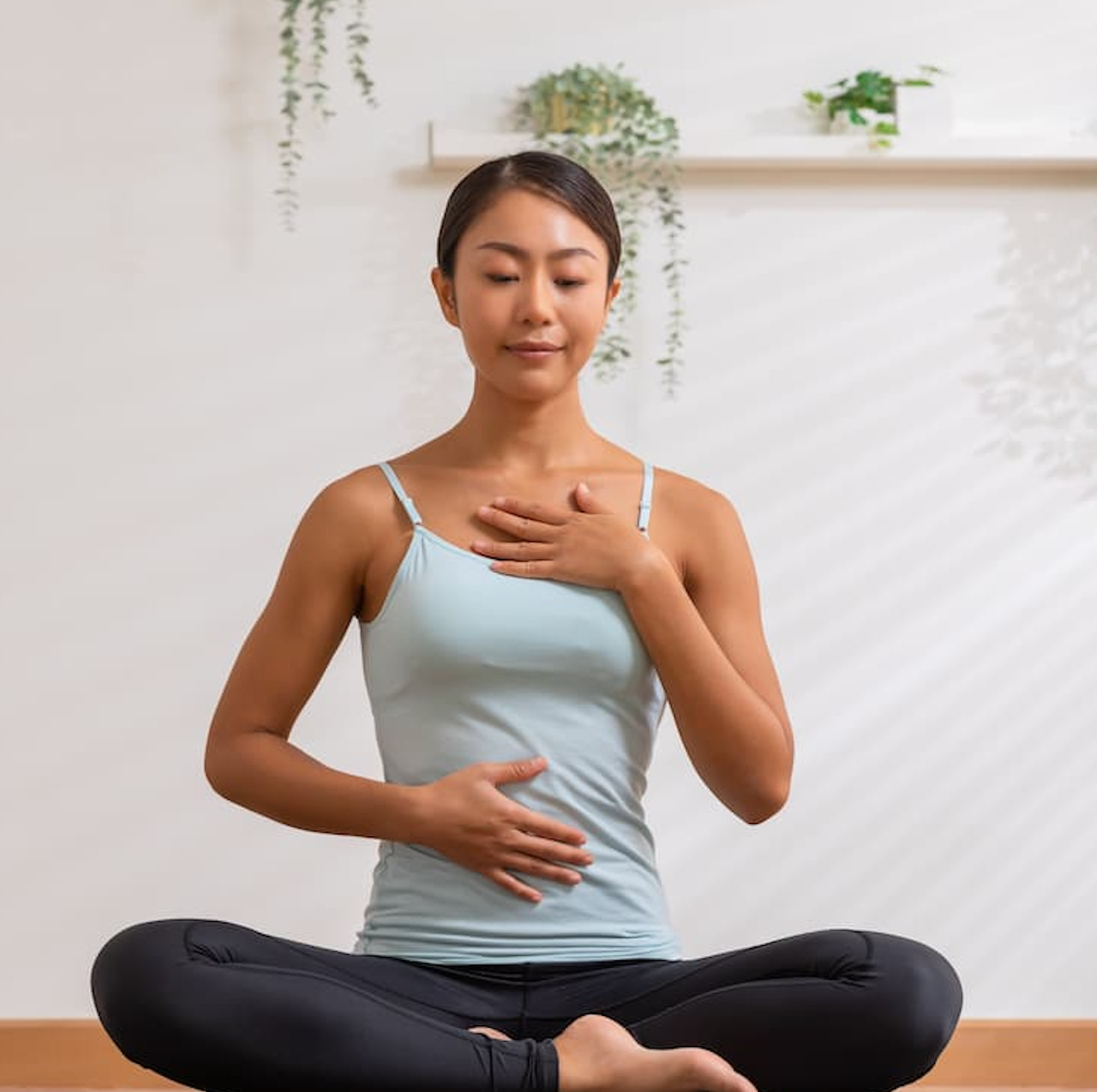7 Breathing Techniques to Instantly Calm Your Mind
Discover 7 simple breathing techniques to calm your mind, ease anxiety and find your center anytime, anywhere.
By
Lana Pine
| Published on January 13, 2025
6 min read
Credit: Adobe Stock/220 Selfmade studio

Stress and anxiety can feel overwhelming, but the solution might be as simple as your next breath. Breathing techniques are powerful tools to calm the mind, regulate emotions and reconnect with the body. Whether you’re dealing with a challenging day at work, struggling to fall asleep or suddenly feeling your heart race with anxiety, focused breathing can help bring you back to a state of balance.
In this list, we’ll explore seven easy and effective breathing techniques you can use anytime you need to ground yourself — no special equipment or training required. Get ready to exhale your stress away!
4-7-8 Breathing
Can’t get to sleep? The 4-7-8 method can help lull you into a state of relaxation, allowing you to drift off to dreamland in no time.
What to do:
- Sit or lay down in a comfortable position, with the tip of your tongue behind your front teeth.
- Begin by completely emptying the air out of your lungs.
- Breathe through the nose for four seconds.
- Hold your breath for seven seconds.
- Purse your lips and slowly but forcefully exhale for a count of 8, ensuring you are making a “whooshing” sound.
- Repeat up to four times.
Experts warn this exercise might make you feel dizzy, so prevent falls by lying or sitting down while practicing this method.
Belly Breathing
Belly breathing, also known as abdomen breathing, works by engaging the diaphragm to reduce the amount of work your body needs to exert to breathe.
What to do:
- Perform this technique either laying down with a pillow beneath your head and knees or in a comfortable chair with your knees bent.
- Put one hand under your rib cage and above your belly button (where your diaphragm is located) and one hand on your heart.
- Breathe in through the nose, while noticing the rise of your stomach.
- Exhale through pursed lips. You can also try to push the air out at the end of the breath by engaging the stomach muscles.
- This technique can be performed three to four times a day, for up to 10 minutes.
Box Breathing
This method is an easy way to relieve anxiety in a pinch, like right before a particularly stressful event.
What to do:
- Sit in a comfortable position.
- Breathe in for four seconds.
- Hold for four seconds.
- Exhale for four seconds.
- Hold for an additional four seconds.
Experts say visualizing a box can help maintain focus and the rhythm of the breath.
Lion’s Breath
This breathing method is a little more intense than the others on this list but just as effective for reducing anxiety. Not only can it reduce stress, it’s also great for lung health. However, if you’re prone to dizziness, experts advise skipping this technique.
What to do:
- Assume a comfortable seated position.*
- Take a few deep breaths to center yourself.
- Inhale deeply through the nose for a few seconds.
- On the exhale, stick out your tongue and make an audible “haaa” sound while gazing toward the ceiling.
- Repeat five to 10 times, with normal breaths in between if needed.
- Afterwards, breathe deeply for a minute or two.
*Alternatively, you can perform this exercise in the lion pose, in which you rest your hips at your heels while pressing your hands into the floor in front of you.
Alternate Nostril Breathing
Alternate nostril breathing has demonstrated multiple health benefits, from lowering heart rate; lowering stress; promoting well-being; and even improving cardiovascular function, lung function and respiratory endurance.
What to do:
- Sit comfortably with your legs crossed.
- Place your left hand on the left knee.
- Exhale completely and then use the right thumb to close the right nostril.
- Inhale through the left nostril, then close the left nostril with your fingers.
- Open the right nostril, and exhale through the right side.
- Inhale through the right nostril, then close it again.
- Open the left nostril and exhale through that side.
- Repeat this cycle for up to five minutes, ensuring you end by exhaling on the left side.
Resonant Breathing
Resonant breathing, also known as coherent breathing, is a powerful method to ease an anxious mind and body while promoting overall well-being. When performed in a quiet space, such as in the morning when you wake up or before you fall asleep at night, it can help to regulate your body’s stress response.
What to do:
- Lay down in a comfortable position and close your eyes.
- Inhale gently for six seconds without completely filling the lungs with air.
- Exhale gently and slowly for six seconds without forcing the air out.
- Continue this practice for up to 10 minutes, followed by a few minutes of stillness with a focus on how the body feels afterward.
Deep Breathing
This exercise is fundamental to many breathing exercises. Experts encourage people to use this technique upon rising in the morning to help relieve stiff muscles and set the mood for a calmer day.
What to do:
- Stand up and hinge forward at the waist with your knees bent slightly and your arms dangling at your sides.
- Inhale slowly and deeply while returning to a standing position, with your head lifting last.
- Hold your breath for a few counts.
- Exhale slowly as you return to the original bent-over position.
- Repeat whenever anxiety starts to creep in.

